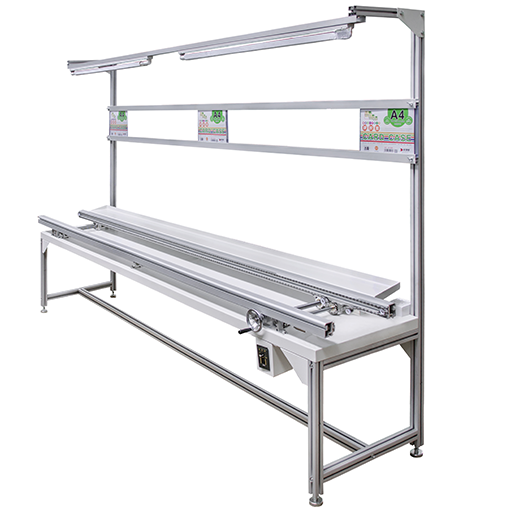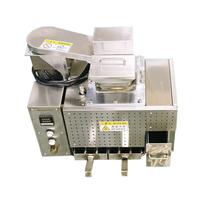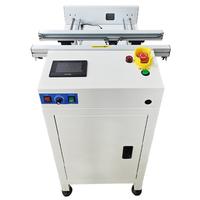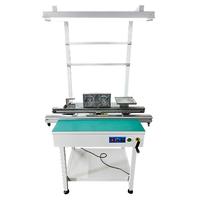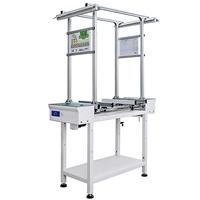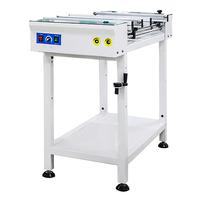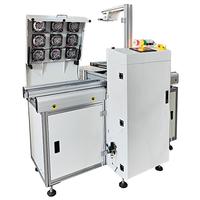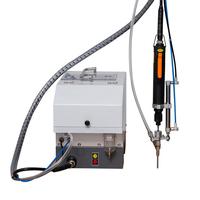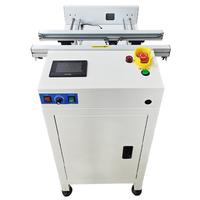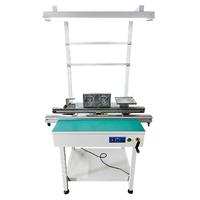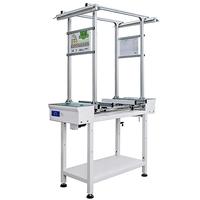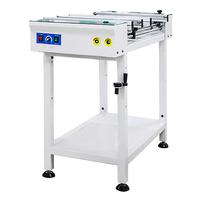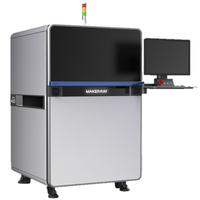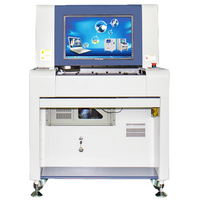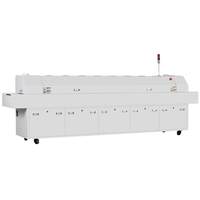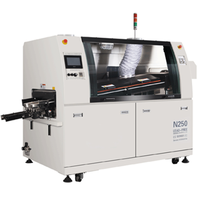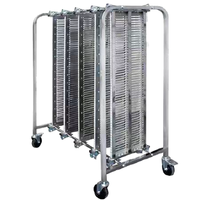PCB Insertion DIP MI Conveyor For Through Hole Process | SZTech-SMT
Company Information:
Name: |
PCB Insertion DIP MI Conveyor For Through Hole Process | SZTech-SMT |
Category: |
|
Offered by: |
|
PCB Insertion DIP MI Conveyor For Through Hole Process | SZTech-SMT Description:
PCB Insertion DIP MI Conveyor For Through Hole Process. SZTech-SMT produces it in high-strength aluminum and stainless metal profiles, the speed is adjustable from 0~3 meter/s.
Main specifications of PCB Insertion DIP MI Conveyor
The length and width of it can be customized!
| Items | Specifications and Materials | ||
| Dimensions | Specification: (L)3000*(W)600*(H) 1950±30mm | ||
| Workbench high: 750±30MM; | |||
| Fuselage structure | Plug-in line adjustable width range: 50-350mm | ||
| The fuselage bracket is made of 40*40 aluminum materials, | |||
| Guide rail adopts 51*56 high-strength special aluminum material; | |||
| The lamp holder is made of 40*40 aluminum material; | |||
| The light adopts 25*50 light; | |||
| The table is made of a 2mm thick steel plate, | |||
| The transmission chain adopts R35 plastic/ stainless metal chain/ Pin chain, etc. | |||
| Drive system | The transmission part adopts Taiwan “VTV” 60W conjoined motor with a governor, the speed is adjustable from 0 to 3M/MIN | ||
| Lighting system | LED single bracket with cover, equipped with LED lamp tube, | ||
| Fittings | The craft holder is made of 25×14 “H” aluminum, each station is equipped with a set of A4 rubber sleeves and the size is 300×240mm (A4 paper shall prevail), can free slip, one set per meter; | ||
| The parts are made of a 1.8mm thick steel plate, and the surface is sprayed. | |||
| The drive sprocket, drive screw, and drive shaft all use high-quality components | |||
How many steps are there in the process of DIP plug-in processing?
With the rapid development of SMT processing technology, SMT patch processing has gradually replaced DIP insertion processing. However, due to the oversize of some electronic components in PCBA production and other reasons, plug-in processing has not been replaced. Still, it plays an essential role in the electronic assembly process. DIP plug-in processing is after SMT patch processing, and generally uses assembly line manual plug-in, which requires a lot of employees.
The process flow of DIP plug-in processing can generally be divided into: component forming processing → plug-in → wave soldering → component cutting → repair welding (post-welding) → board washing → functional testing
1. Pre-processing the components
First of all, the staff in the pre-processing workshop go to the material place to pick up the materials according to the BOM material list, carefully check the material model, and specification, sign, and perform pre-production pre-processing according to the model, using automatic bulk capacitor cutting machine, transistor automatic molding machine, fully automatic Forming equipment such as belt forming machines for processing.
2. Plug-ins
Insert the chip-processed components into the corresponding positions on the PCB board to prepare for wave soldering.
3. Wave soldering
Put the inserted PCB board into the wave soldering conveyor belt, and complete the soldering of the PCB board after spraying flux, preheating, wave soldering, cooling, and other links.
4. Component cutting feet
Cut the feet of the soldered PCBA board to achieve a suitable size.
5. Repair welding (post-welding)
Repair welding should be carried out for maintenance for finished PCBA boards that have not been completely welded after inspection.
6. Washing plate
Clean the harmful substances such as soldering flux remaining on the finished PCBA to meet the cleanliness of the environmental protection standard required by the customer.
7. Function test
After the components are soldered, the finished PCBA board needs to be functionally tested to check whether the functions are normal. If a functional defect is detected, it needs to be repaired and retested.
PCB Insertion DIP MI Conveyor For Through Hole Process | SZTech-SMT was added in Apr 2023
PCB Insertion DIP MI Conveyor For Through Hole Process | SZTech-SMT has been viewed 154 times
20 More Products from SZTech-SMT Firm :
